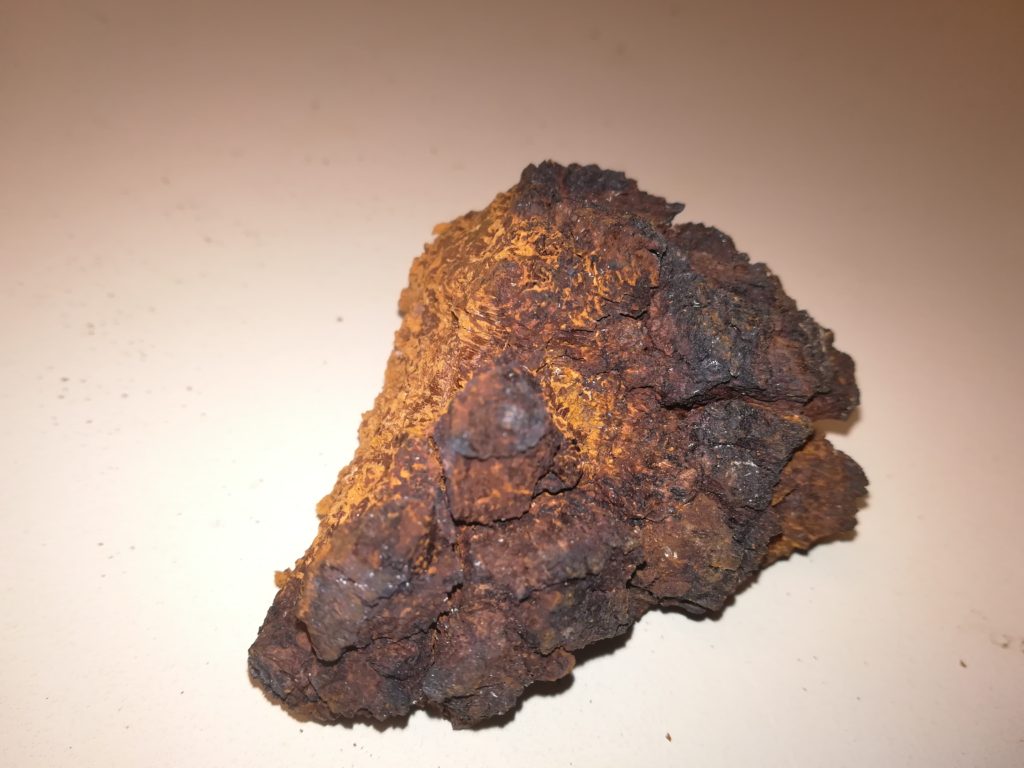Chaga or birch fungus, Latin name: Inonotus obliquus, is a famous folk medicine from Russia, mainly Siberia and has been used by local people for centuries. Already in the 12th century Chaga is mentioned to cure tumors already in the 12th century.
It became more known in the West thanks to the book by Alexander Solzhenitzyn: “Cancer Ward”, where Chaga is often mentioned as an effective substance against cancer.(2) In the former Soviet-Union it is even labeled as an official medication since 1955, called Befungin.
First of all: of course academic medicine often ridicules folk medicine, but folk medicine delivers good epidemiological data. First of all, when a product does not work, people will no longer use it. Secondly: when people get sick or die when using a natural product, they will stop using it, the cure cannot be worse than the disease.
So most likely when centuries of use of a specific product are recorded, there must be something special to it. One of the famous examples is the use of digitalis or fox glove. Still one of the most used heart medications around. When a doctor, William Withering, in 1776, not being able to help a patient with edema he visited a herbal medicine women. She told him she uses the leaves of the digitalis plant as a cure for edema. More than 200 years later, millions of patients around the world still owe their life to the use of this “folk medicine”.(3) And there are many more examples in ridiculed folk medicine that later prove to be of great use and are now used in conventional medicine.
But Chaga has more applications than just support in cancer therapy (4). Modern research has shown Chaga to be useful for: (5,6,7,8,9)
- gastritis and stomach problems
- diabetes
- stimulating the immune system
- viral infections (directly)
- hypertension
- skin problems like eczema or psoriasis
- stress, it is an adaptogen, improving our resistance against unfavorable conditions like cold, stress, fatigue (10)
- use as an antioxidant
Chaga is a black irregularly formed fungus which grows on birch trees, but also on other trees.

It is almost always taken as a tea since its chemical components, mainly polysaccharides or sugars, are well-soluble in water.
There is also another interesting birch fungus, called Phellineus linteus.(11) Phellineus is clearly different from Inonotus, but many people also call it Chaga.
Phellineus is a brownish and regularly shaped like a horse shoe.

Phellinus linteus from birch tree
Phellineus is easier to find and more available than Inonotus. But in the end, the use and effects are almost the same: used as a tea with hot water and with the same applications like Inonotus (11,12)
Both fungi could be used effectively in prevention and therapy for a wide range of health problems: they are safe and almost non-toxic. Just keep it in mind.
Literature:
- Saar, M: Fungi in Khanty Folk Medicine; J.Ethnopharmacol.; Vol.31, 1991, pg. 175- 179
- Solzhenitsyn, A: Cancer Ward; Penguin, 1968.
- Gerald, M.C: The Drug Book – From Arsenic to Xanax; Sterling Publishing, 2013 (vert: De Geschiedenis van Geneesmiddelen, Librero, 2013)
- Song, F.Q: Progress on Understanding the Anticancer Mechanisms of Medicinal Mushroom: Inonotus Obliquus; Asian Pacific Journal of Cancer Prevention, Vol 14, 2013, pg.1571-1578.
- Shashkina, M.Y, et al: Chemical and Medicobiological Properties of Chaga (Review); Pharmaceutical Chemistry Journal Vol. 40, No. 10, 2006, pg.560-567.
- Glamočlija, J; et al: Chemical characterization and biological activity of Chaga (Inonotus obliquus), a medicinal “mushroom”; J Ethnopharmacol, 2015, Mar 13, 16, pg. 323-332.
- Duru, K.C: The pharmacological potential and possible molecular mechanisms of action of Inonotus obliquus from preclinical studies; Phytotherapy Research. 2019, pg. 1–15.
- Szychowski, K.A: Inonotus obliquus – from folk medicine to clinical use; https://doi.org/10.1016/j.jtcme.2020.08.003
- Balandaykin, M.E; Zmitrovich, I.V: Review on Chaga Medicinal Mushroom, Inonotus obliquus (Higher Basidiomycetes) – Realm of Medicinal Applications and Approaches on Estimating its Resource Potential; International Journal of Medicinal Mushrooms, 17(2), 2015, pg.95–104.
- Gavrilov, A.S: Adaptogen Actions from Inonutus obliquus; Pharmaceutical Chemistry Journal Vol. 37, No. 2, 2003, pg.95-98.
- Smolibowska, J, et al.: Medicinal properties of fungi occurring on Betula sp. trees. A review; Herba Pol. 2016, 62(3), pg.63-76
- Zhu, T, et al: A Medicinal Mushroom: Phellinus linteus; Current Medicinal Chemistry, 2008, 15, pg.1330-1335.
- Chen, W, et al: A Review: The Bioactivities and Pharmacological Applications of Phellinus linteus; Molecules 2019, 24, 1888; doi:10.3390/molecules24101888

Hey, thank you for writing this piece – very informative.
What do you believe is the most effective or even easiest way to consume Chaga – in an extract/supplement, or in a coffee like Four Sigmatic or just bought from a grocery store and heated up in a pan?
Hello Jordan, there are several good ways which are used in practical sense: most used: as a tea, let a chunk of Chaga soak in hot water like a tea, since it comes in chunks of different size: the larger, the longer the time to soak for dissolving its bioactive components in water. It has neutral to pleasant taste. One can also try to make a tincture, often used is wodka 50% alcohol/50% water to also dissolve the alcohol-soluable components. Put the Chaga in a glass jar, with wodka and let it there for a month. This is often stronger than the tea, so one can take less, many people take one tablespoon of this tincture every day. Of course you can put it in any hot fluid like coffee as well, but just give it time to dissolve the bioactive components of the Chaga chunck into the fluid.